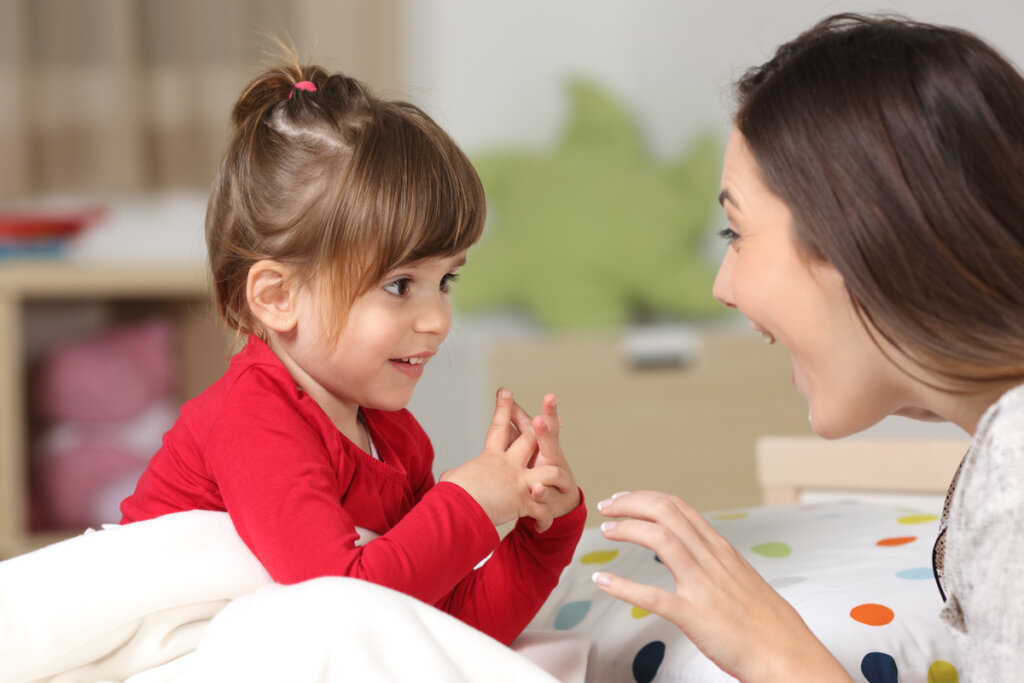The Importance of Healing Yourself Before You Have Children


Written and verified by the psychologist Raquel Aldana
Healing yourself before you have children is essential for their full well-being. Therefore, the best thing you can do is to take care of yourself, protect yourself from harm, and respect yourself and others. However, this may not be as simple as it might appear at first glance.
Most of us want the best for our children, but wanting it isn’t enough. For instance, to build a basket, you need wicker. However, you might not be aware of your lack of this material, otherwise known as your attachment style, and how you’re going to transmit it to your children.
It’s devastating to see adults broken due to their parents’ attachment styles or other health problems. Moreover, our psychological health begins long before conception. Given this fact, it’s a topic that needs investigating.
Mental changes that occur during pregnancy
On a psychic level, during pregnancy, you begin to make room for the baby. Dinora Pines, a British doctor, has analyzed this process. She defined three different stages of pregnancy:
- First stage. From conception to the first fetal movements (18 weeks). At this stage, the mother feels ambivalent, assessing if it’s a good time for her to become a mother, if she’ll do it well, etc. Such doubts are normal unless they interfere with her daily life.
- In the second stage, which is also crucial, maternal representations appear. They occur between the first fetal movements until approximately week 34. At this stage, the woman notices the baby inside her. She also begins to remember her relationship with her own mother and how those roles have changed throughout her life. She begins to build the role of being a mother herself and works out if her role will be similar or contrary to that assumed by her own mother. This happens gradually as she develops an integrated vision of the relationship with her mother.
- In the third stage, from week 34 until delivery, fantasies related to the time of delivery appear. At this time, the woman might experience greater anxiety. Her mental representation of what the baby will be like and what life with them will be like begins to be more stable.

The mother’s mental representation of her baby is key to their psychological development
The researchers Zeanah and Benoit claim that what happens in this last stage is crucial. In their study, they observed that when the birth was traumatic or the mother’s expectations weren’t met, the mother’s mental representations broke down. As a result, a complex psychological readjustment had to take place.
On the other hand, when the mental representations were balanced (not so idealized or everything went as imagined), babies developed more safely in the first year of life. Therefore, if the mother is more aware of her baby’s development, she’s more likely to be more attuned from the start.
Pregnancy is a crucial moment to review our bonding history. Therefore, preconception is an ideal moment for future parents to review their own history and resolve anything that needs solving, and decide whether they want to perpetuate the roles they experienced or not.
Attachment styles are key to healing
The attachment system is the mechanism responsible for capturing and controlling the security and accessibility that your attachment figures offered you. This process originally occurs in childhood. Your attachment figures were your parents or main caregivers.
Consequently, your ways of relating and loving are based on your relationships with your parents. You’ll love in one way or another depending on how they loved you. This completely shapes your relational history and, therefore, that of your children.
There are four attachment styles: secure attachment, anxious attachment, avoidant attachment, and disorganized attachment. One style is secure and the other three are insecure.

If you have an insecure attachment style and don’t work on it therapeutically, you’ll transmit it to your children via the way in which you offer them protection and autonomy. Indeed, it’s the combination of these two elements that favor the development of a secure or insecure attachment in children.
Although most parents want to encourage a secure attachment in their children, only approximately 50-60 percent of the population possess this kind themselves. The avoidant style is possessed by 20 percent of the population, the anxious by 15 percent, and the disorganized by five to ten percent.
Attachment styles
- The secure attachment style is accessible, attuned, and responsive to the child’s needs. These individuals can validate emotions and enhance the curiosity and autonomy of their children.
- Those with an avoidant attachment style feel uncomfortable in their relationships with their emotions. In fact, they have a tendency to disconnect from their emotional world and connect little with their children. In these contexts, privacy, affection, and protection are in danger.
- A parent with an anxious attachment style isn’t consistent in the way they respond to their child’s needs. As a rule, these parents are extremely involved and want to do it well, but they don’t consistently offer the emotional attention that the situation requires. Consequently, the children grow up in an environment of uncertainty. This gives rise to children and adults who are constantly dysregulated.
- Finally, in disorganized attachment, the main caregiver generates great confusion and terror in the child. Generally, they’re unprotected and feel extremely vulnerable. Their parents often suffer from addictions or have serious psychiatric problems. They generate continuous feelings of fear in the child.
Finally, it’s important that you properly identify your attachment style and work on what you need to. This is the only way you can ensure you won’t reproduce maladaptive patterns in your relationships as a partner, friend, or relative. Moreover, you won’t pass on the kind of emotional inheritance to your children that scars them for life in a dysfunctional manner.
All cited sources were thoroughly reviewed by our team to ensure their quality, reliability, currency, and validity. The bibliography of this article was considered reliable and of academic or scientific accuracy.
- Ainsworth, M. & Bowlby, J. 1965. Child Care and the Growth of Love. London: Penguin Books
- Pines, D. (1972). “Pregnancy and motherhood: interaction between fantasy and reality”. British Journal of Medical Psychology. 45 (4): 333–343. doi:10.1111/j.2044-8341.1972.tb02216.x.
- Zeanah, C. y Benoit, D. (1995). Clinical Applications of a Parent Perception Interview in Infant Mental Health. Child and adolescent psychiatric clinics of North America, 4(3):539-554. DOI:10.1016/S1056-4993(18)30418-8
This text is provided for informational purposes only and does not replace consultation with a professional. If in doubt, consult your specialist.








